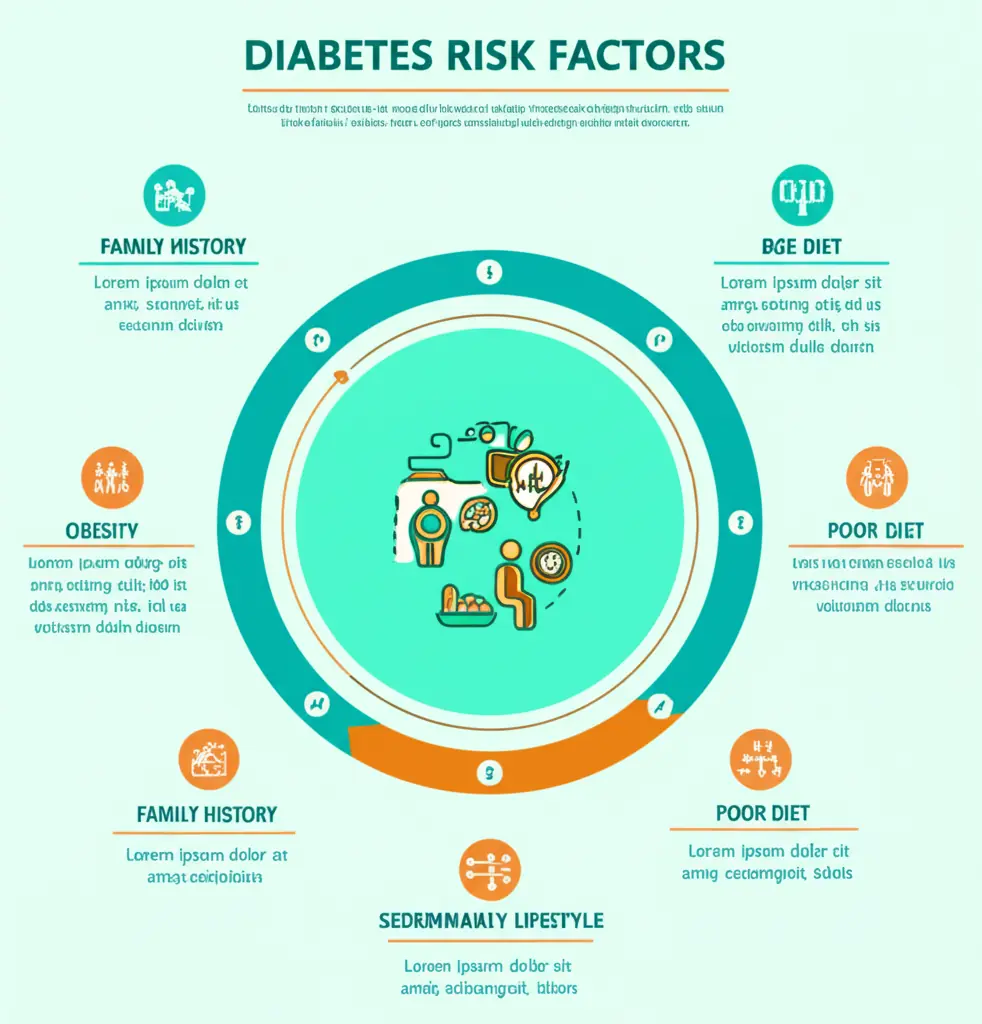Type 2 Diabetes Prevention: Evidence-Based Strategies to Reduce Risk
Type 2 diabetes affects 37 million Americans and is 90% preventable through lifestyle modification. Learn 9 evidence-based strategies to reduce your risk by up to 58% with diet, exercise, and targeted interventions.
Understanding Type 2 Diabetes
Type 2 diabetes is a chronic metabolic disorder characterized by insulin resistance and impaired glucose regulation. Unlike type 1 diabetes (autoimmune), type 2 develops gradually over years and is primarily driven by lifestyle factors, making it largely preventable.
The Progression to Type 2 Diabetes

- • Fasting glucose: <100 mg/dL
- • A1C: <5.7%
- • Normal insulin sensitivity
- • Efficient glucose uptake by cells
- • Fasting glucose: 100-125 mg/dL
- • A1C: 5.7-6.4%
- • Cells become resistant to insulin
- • Pancreas compensates with higher insulin output
- • Reversible with lifestyle intervention (71% reversal rate)
- • Fasting glucose: ≥126 mg/dL
- • A1C: ≥6.5%
- • Pancreatic beta cell dysfunction
- • Insufficient insulin production
- • Chronic hyperglycemia and complications
Why Prevention is Critical
- 90% preventable: The vast majority of type 2 diabetes cases are attributable to modifiable lifestyle factors
- Prediabetes is reversible: 88 million Americans have prediabetes; lifestyle intervention reverses it in 71% of cases
- Prevents complications: Early intervention prevents heart disease, kidney failure, neuropathy, blindness
- Cost savings: Diabetes costs $327 billion annually in the U.S.; prevention dramatically reduces healthcare burden
Type 2 Diabetes Risk Factors
Understanding your risk factors is the first step toward prevention. While some factors are non-modifiable (age, genetics), most major risk factors can be addressed through lifestyle changes:

Risk is cumulative—multiple factors compound. Someone who is obese (BMI >30), sedentary, with a family history may have 40-100x baseline risk. The good news: addressing modifiable factors (weight, diet, exercise) can reduce risk by 50-70% even with genetic predisposition.
Health Consequences of Type 2 Diabetes
Chronic hyperglycemia causes widespread vascular and organ damage over time:
Framingham Study: Diabetes increases cardiovascular mortality 2.3x in men, 3.4x in women
Meta-analysis: Diabetes associated with 60% higher dementia risk (HR 1.60, 95% CI: 1.45-1.77)
Study: 50% of diabetics develop neuropathy within 10 years; 30% within 5 years of diagnosis
CDC: Diabetes causes 44% of new kidney failure cases; 30-40% of diabetics develop nephropathy
9 Evidence-Based Diabetes Prevention Strategies
These strategies target the root causes of type 2 diabetes with documented risk reductions from landmark prevention trials:
- 1.Target 7-10% weight loss (e.g., 14-20 lbs for 200 lb person)
- 2.Create 500-750 calorie daily deficit for 1-1.5 lbs/week loss
- 3.Maintain weight loss long-term through sustainable habits
- 4.Even 5% weight loss provides significant metabolic benefits
- 1.Extra virgin olive oil as primary fat (3-4 Tbsp daily)
- 2.Abundant vegetables (5+ servings), legumes (3-4x/week)
- 3.Whole grains, nuts, fatty fish 2-3x/week
- 4.Limit red meat, processed foods, refined carbohydrates
- 1.Choose low-GI carbs: legumes, non-starchy vegetables, intact whole grains
- 2.Replace white bread, rice, potatoes with quinoa, sweet potatoes, lentils
- 3.Pair carbs with protein/fat to lower glycemic response
- 4.Limit high-GI foods: white bread, pastries, sugar-sweetened beverages
- 1.Resistance training: 3x/week, major muscle groups, 70-80% 1RM
- 2.Aerobic exercise: 150-300 min/week moderate OR 75-150 min vigorous
- 3.Combined training superior to either alone for insulin sensitivity
- 4.Post-meal walks (10-15 min) significantly reduce glucose spikes
- 1.Target 25-30g fiber daily (soluble and insoluble)
- 2.Emphasize soluble fiber: oats, beans, lentils, apples, psyllium
- 3.Include insoluble fiber: whole grains, vegetables, nuts
- 4.Increase gradually to avoid GI discomfort; drink adequate water
- 1.Consistent 7-8 hour sleep schedule (sweet spot for insulin sensitivity)
- 2.Address sleep disorders: sleep apnea common in prediabetes/obesity
- 3.Sleep regularity as important as duration for glucose control
- 4.Improve sleep quality: dark room, cool temperature, regular timing
- 1.Daily stress reduction: meditation (20 min), yoga, breathing exercises
- 2.Regular physical activity (reduces stress and improves insulin sensitivity)
- 3.Adequate sleep (chronic sleep deprivation raises cortisol)
- 4.Social connection and mental health support
- 1.Get screened: Fasting glucose, A1C, or OGTT (especially if BMI >25 or family history)
- 2.Prediabetes criteria: A1C 5.7-6.4%, fasting glucose 100-125 mg/dL
- 3.Intensive lifestyle intervention: diet + exercise + weight loss
- 4.Monitor every 3-6 months to track progress
- 1.Remove all SSBs: soda, sweetened coffee/tea, energy drinks, fruit juices
- 2.Replace with water, unsweetened tea/coffee, sparkling water
- 3.Each daily SSB serving increases diabetes risk significantly
- 4.Avoid artificial sweeteners initially (may affect gut microbiome)
Prediabetes Screening and Reversal
88 million Americans have prediabetes, but 84% don't know it. Early detection and intervention can reverse prediabetes in 71% of cases:
Prediabetes Range:
5.7-6.4%
Normal:
<5.7%
Diabetes:
≥6.5%
Prediabetes Range:
100-125 mg/dL
Normal:
<100 mg/dL
Diabetes:
≥126 mg/dL
Prediabetes Range:
140-199 mg/dL (2-hour)
Normal:
<140 mg/dL
Diabetes:
≥200 mg/dL
- • All adults age 45+, regardless of weight or symptoms
- • Adults of any age with BMI >25 (or >23 for Asian Americans) PLUS one additional risk factor
- • Women with history of gestational diabetes (screen every 3 years minimum)
- • Anyone with symptoms: increased thirst, frequent urination, unexplained fatigue, blurred vision
- • First-degree relative with diabetes (parent, sibling)
Evidence-Based Supplements for Diabetes Prevention
These supplements have research support for improving insulin sensitivity and glucose control when combined with diet and exercise:
Evidence:
Lowers fasting glucose 15-25 mg/dL via AMPK activation, improves insulin sensitivity comparable to metformin
Safety:
Good - may cause GI upset initially, avoid if pregnant, monitor with diabetes medications
Evidence:
Meta-analysis: 100mg/day magnesium intake = 15% lower diabetes risk; improves insulin sensitivity
Safety:
Excellent - choose glycinate or citrate forms, may cause loose stools at high doses
Evidence:
Reduces fasting glucose 10-29 mg/dL, improves insulin sensitivity through enhanced glucose uptake
Safety:
Good - use Ceylon variety (low coumarin), avoid high doses with liver disease
Evidence:
Improves insulin sensitivity, reduces oxidative stress, effective for diabetic neuropathy prevention
Safety:
Good - take on empty stomach for absorption, may lower blood sugar (monitor if diabetic)
Supplements are adjuncts to, not replacements for, diet and exercise. Always consult healthcare provider before starting, especially if taking diabetes medications (risk of hypoglycemia). Choose third-party tested products (USP, NSF, ConsumerLab) for quality assurance.
Your Diabetes Prevention Action Plan
Follow this step-by-step protocol to reduce your diabetes risk by 50-70%:
- 1.Get screened: A1C, fasting glucose, or OGTT (know your baseline)
- 2.Calculate target weight (7-10% loss goal if overweight)
- 3.Eliminate sugar-sweetened beverages (easiest high-impact change)
- 4.Start walking 10-15 minutes after meals (immediate glucose benefits)
- 1.Adopt Mediterranean diet pattern: olive oil, vegetables, legumes, fish
- 2.Start resistance training: 3x/week, major muscle groups
- 3.Add aerobic exercise: 150 min/week moderate (brisk walking, cycling)
- 4.Optimize sleep: 7-8 hours, consistent schedule
- 1.Retest A1C/glucose (expect improvement with adherence)
- 2.Add stress management: meditation, yoga, or mindfulness practice
- 3.Consider evidence-based supplements: berberine, magnesium
- 4.Maintain 7-10% weight loss (or continue if not yet achieved)
- 1.Annual screening: A1C or fasting glucose to track progress
- 2.Sustain weight loss and exercise habits (consistency is key)
- 3.Monitor for regression: weight gain, worsening glucose control
- 4.Adjust protocol based on results and lifestyle changes
Frequently Asked Questions
Expert answers to common diabetes prevention questions
The Bottom Line
Type 2 diabetes affects 37 million Americans but is 90% preventable through lifestyle modification. The evidence is clear: targeted interventions reduce diabetes incidence by 50-70%, with some strategies (intensive lifestyle intervention) achieving 58% risk reduction in landmark trials.
- Weight loss of 7-10% reduces diabetes risk 58% (Diabetes Prevention Program)
- Mediterranean diet reduces diabetes risk 30-40% (PREDIMED study)
- Combined resistance + aerobic exercise reduces diabetes risk 50%
- Prediabetes reversal is achievable in 71% with intensive lifestyle intervention
- Optimal sleep (7-8 hours) and eliminating SSBs provide additional 20-30% risk reduction
Early detection is critical: 88 million Americans have prediabetes, but 84% don't know it. Get screened if you're age 45+, have BMI >25 with additional risk factors, or have a family history. Prediabetes is the window of opportunity—reversing it prevents progression to diabetes and associated complications (heart disease, kidney failure, neuropathy, dementia).
Start today: eliminate sugar-sweetened beverages, walk 10-15 minutes after meals, and schedule screening. These simple first steps initiate the cascade toward diabetes prevention. The science is unequivocal—lifestyle modification works.
